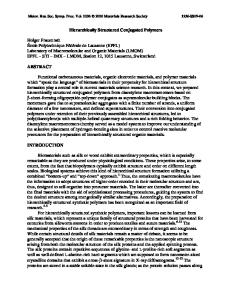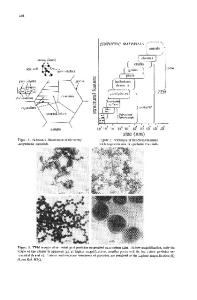Chemical Modification on Hierarchically Structured ZnO Films for Energy Conversion Efficiency Enhancement of Dye-Sensiti
- PDF / 2,635,247 Bytes
- 8 Pages / 612 x 792 pts (letter) Page_size
- 78 Downloads / 281 Views
1102-LL06-08
Chemical Modification on Hierarchically Structured ZnO Films for Energy Conversion Efficiency Enhancement of Dye-Sensitized Solar Cells
Qifeng Zhang1, Samson A Jenekhe2, and Guozhong Cao1 1
Materials Science and Engineering, University of Washington, Seattle, WA, 98195
2
Chemical Engineering, University of Washington, Seattle, WA, 98195
ABSTRACT We report the synthesis of ZnO aggregates in the presence of lithium salt and the enhancement on the energy conversion efficiency of dye sensitized solar cells when the photoelectrode films consist of as-synthesized ZnO aggregates. The conversion efficiency for ZnO film consisting of aggregates synthesized with lithium involvement is significantly improved up to 5.8%, which is 32% higher than that of 4.4% obtained for pure ZnO film. Such an enhancement can be attributed to the effect of lithium-induced changes on the morphology and crystallinity of aggregates, the optical absorption of films, and the surface chemistry of ZnO, which provides the film with decreased electron trapping and increased refractive index, and enhances the electronic coupling between the dye molecules and ZnO. INTRODUCTION Dye-sensitized solar cells (DSSCs) as less expensive photovoltaic devices have attracted much attention during the past two decades.[1, 2] Many wide-band-gap oxide such as TiO2,[3] ZnO,[4] SnO2[5] and Nb2O5[6] have been investigated as photoelectrode materials to apply on DSSCs. So far, the best solar-to-electric conversion efficiency of over 11% was achieved on TiO2 nanocrystalline films that featured a highly porous structure and thus provided an extremely huge surface area for dye adsorption.[7] ZnO is regarded as a promising alternative of TiO2 due to its similar energy band to that of TiO2 and the advantageous on both the ease of synthesizing various nanostructures and the high electron mobility, 115~155 cm2V-1s-1 that is seven orders of magnitude higher than ~ 10-5 cm2/Vs for TiO2.[8, 9] Many efforts have been made on ZnO-based DSSCs, however, the reported conversion efficiency is still kept at a relatively low level, for example, 1.5~2.4% for ZnO nanocrystalline films,[10-12] 0.3~1.5% for ZnO nanowires,[13-15] and 1.6% for ZnO nanotubes,[16] Such poor photovoltaic performance is most likely caused by the lack of stability of ZnO in dye solution, which limits the sufficient adsorption of dye molecules and even results in the formation of nonconductive Zn2+/dye complex layer on ZnO surface that may block the injection of electrons from the dye molecules to the semiconductor electrode.[17, 18] It is therefore critical to either use physical effect to increase the light harvesting efficiency of
photoelectrode or modify ZnO surface to change the surface chemistry so that the electronic coupling between ZnO and dye molecules may become more effective. Our previous work already achieved a relatively high conversion efficiency, above 3.5% for dye-sensitized ZnO solar cell with electrode film containing spherical aggregation of nano-sized ZnO crystallites, in whic
Data Loading...










